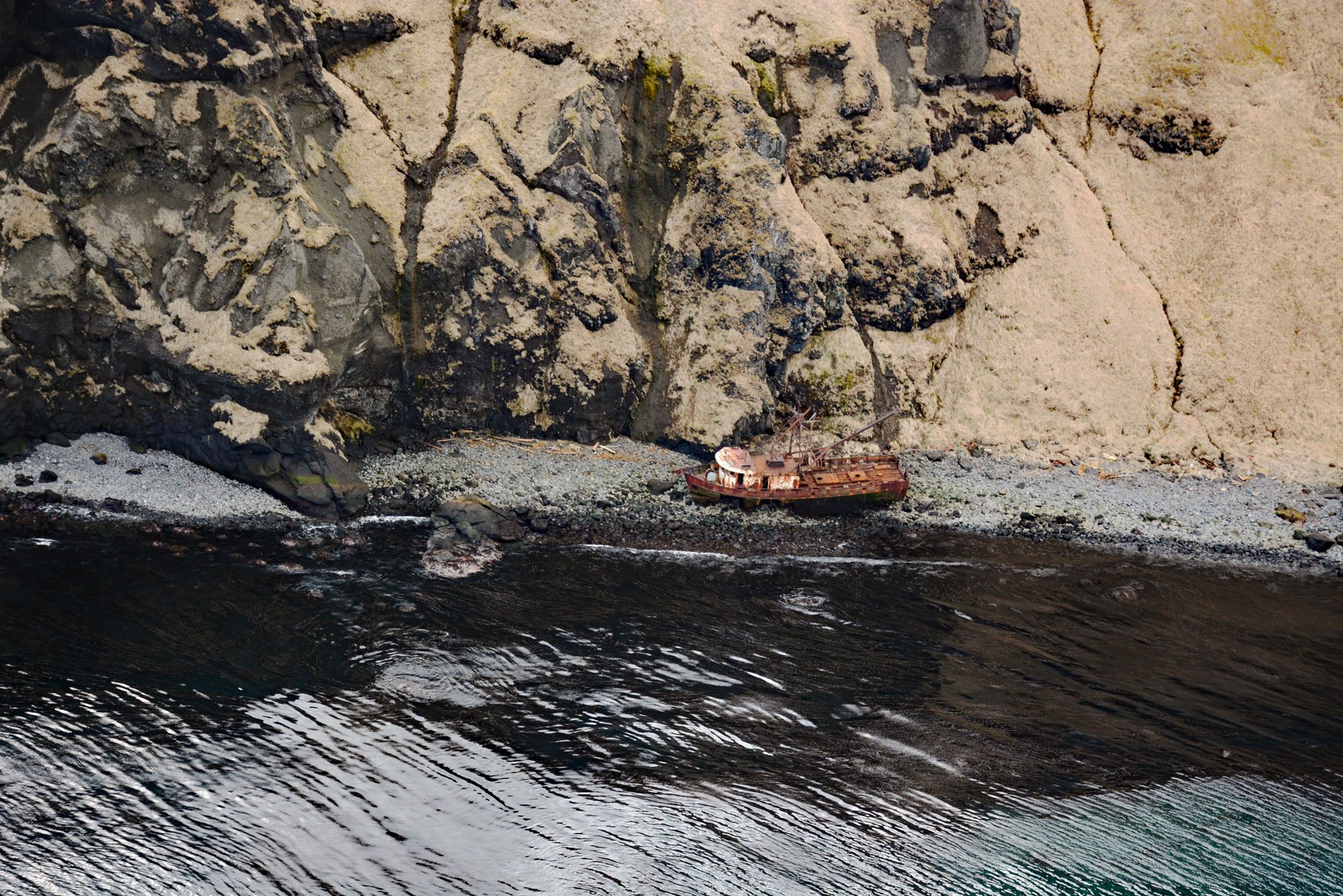Akun Bay is an embayment on the western coast of Akun Island, about 7 miles (11 km) wide at the entrance between Round Head to the south and Billings Head to the north and the site of the FV Lisa Jo shipwreck, about 94 miles (151 km) southwest of False Pass and 13 miles (21 km) northeast of the village of Akutan, Alaska. Billings Head is a promontory on the northeast coast of Akun Island, named in 1938 by the U.S. Coast and Geodetic Survey for Commodore Joseph Billings, of the Imperial Russian Navy. Billings was an Englishman who commanded a Russian exploring and surveying expedition in the Bering Sea and North Pacific Ocean in 1791 and 1792. Akun is an Aleut Unangan name recorded in 1768 by Captain Lieutenant P.K. Krenitzin of the Imperial Russian Navy. The linguist R.H. Geoghegan gives the meaning of the name “hakun” as “that, over there”. Akun Island is one of the Krenitzin Islands, a group of small islands located in the eastern portion of the Fox Islands group between Unalaska Island to the southwest and Unimak Island to the northeast. The Fox Islands are the closest group of islands in the Aleutian chain to mainland North America and represent the islands east of Samalga Pass and the Islands of Four Mountains. Foggy almost all year round, the islands are difficult to navigate due to constantly adverse weather and numerous reefs.
Although basically uninhabited now, Akun Island has been inhabited historically by the Aleut for centuries. The Fox Islands were first visited by Europeans in 1741, when Vitus Bering, a Danish navigator employed by the Imperial Russian Navy, came searching for new sources of fur for the Russian maritime fur trade. During the Russian colonial period, there were three separate villages or artels on Akun Island which the Russians named Artelnovskoe, Rechesnoe, and Seredninskoe. Despite Akun Island’s remoteness and small size, in the late 1790s, it was visited by Hieromonk Makary, one of the original Russian Orthodox missionaries to Alaska. He lacked a translator but managed to baptize many of the residents. A severe storm in 1799, sank his ship the Phoenix while bound for the Kodiak colony and all people and supplies were lost. This was a serious setback for both the Orthodox mission in Alaska and the colony, and no immediate replacements were made for the lost missionaries. The next visit to Akun by an Orthodox priest was on June 12, 1828, when Ivan Evseyevich Popov-Veniaminov, also known as Saint Innocent, arrived while on a trip from Unalaska to Unimak Island. In 1843, a Russian Orthodox chapel was built on Akun Island by Ivan Pankov, the Aleut Unangan leader of Tigalda who developed the Aleut orthography with Veniaminov and translated part of the Bible into Aleut Unanga. In 1844, the chapel was consecrated by Father Gregory Golovin, the priest who succeeded Saint Innocent at the Holy Ascension Church in Unalaska. This was the first chapel to be built in the Eastern Aleutian Islands.
In the early morning of February 19, 1997, the fishing vessel Lisa Jo ran hard aground on rocks along the southern shore of Akun Bay when the operator reportedly fell asleep. Lisa Jo was 77 feet (24 m) in length and had roughly 1,200 gallons (4,543 l) of diesel fuel onboard. The vessel maintained hull integrity for several hours, but strong north winds caused large waves that eventually broke the hull which spilled all the fuel. The vessel was considered a total loss. U.S. Coast Guard Cutter Mellon helped rescue the single crewman. Overflights on the second day revealed considerable oil sheen around the vessel, but the diesel release did not threaten the two sea lion rookeries on the north shore of Akun Island, and no birds or marine mammals were observed near the wreck. The Aleutian Islands are the final resting place for hundreds of wrecked vessels, mostly either fishing boats or large cargo vessels. The lucrative fishing grounds surrounding the islands in the Bering Sea and the Gulf of Alaska attract hundreds of fishing boats every year, often working during the most severe weather conditions. Thousands of large ocean-going cargo ships, an average of 10 per day, follow a navigation corridor called the Great Circle Route which is the shortest distance between North America and Asia. The route goes through Unimak Pass. Read more here and here. Explore more of Akun Bay and Akun Island here:

